
|
|
|
|
BY: SUN STAFF
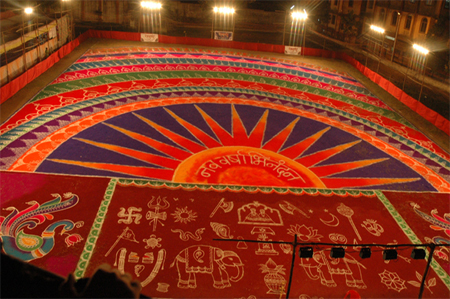
Chaitrangan Rangoli Feb 19, 2011 — CANADA (SUN) — A study of the historical, spiritual and cultural elements of Vedic design. Earlier in this series we mentioned just a few of the regional names used to describe the art of Rangoli, as it's known in North India, or Kolam, as it's known in the south, particularly Tamil Nadu. In Kerala it is called puvidal, 'puv' meaning flower and 'idal' meaning arrangement. In Karnataka the art often goes by rangoli or kolam, but it's often drawn with powdered rock rather than rice. Bengal's art is called alpana (apana) , and it is generally drawn with wet rice paste. Likewise, in Andhra Pradesh the muggulu (muggu) designs are drawn in a thick batter of soaked rice flour. In Rajasthan it is known as mandana, and there the paste is made of rice flour mixed with a little turmeric. The designs are not only drawn on floors, but also on the walls in Rajasthan. In Madhya Pradesh the art is called chaukpurna (chowkpurna) , and the traditional designs are fitted into squares, ornamented with leaves and flowers. In Gujarat it is called sathiya, in Uttar Pradesh it is sona rakhana, and in Orissa it's called ossa. In Maharashtra, the rangoli paste is made of powdered rock mixed together with burned rice skins. As we can see, the variations from region to region are not only in name, but also in the materials used to make the paste, as well as in the methods of executing the designs. In the same way, each region has its own style of depicting traditional Vedic symbols. One of the most common of all design motifs rendered in rangoli all across the country, along with yantras, mandalas and the mango (paisley) design, is the symbol for the Sun. These motifs are found in all traditions and in all art mediums, from temple sculptures to paintings to rangoli. The Sun may be depicted very simply as a yellow orb, as a spiked geometric figure, as an abstract, or as the personality of Lord Surya, the Sun god. Sometimes Surya and Chandra, the moon, are depicted together, particularly in designs for Makar Sankranti festival. Following are just a handful of solar motif examples, to illustrate the variety of rangoli and kolam styles and some of the associated religious symbols. Our first example, above, is one of the largest rangolis ever produced. Covering 17,000 square feet, this very stylized geometric solar motif is known as 'Chaitrangan'. It took 100 artists just 12 hours to complete.
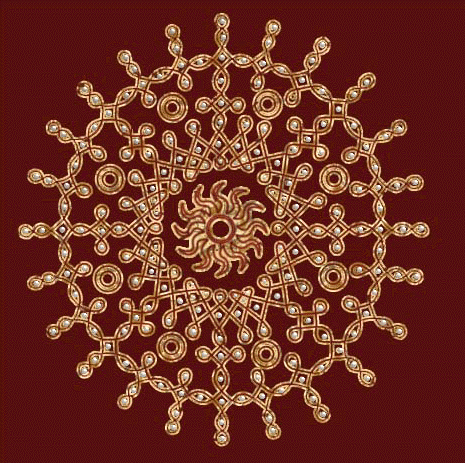
Immediately above is a complex kolam design, built around a pattern of geometrically placed dots and connecting lines. The solar motif sitting at the center is similar to the chakra design, and this is a symbol often found in solar rangoli.
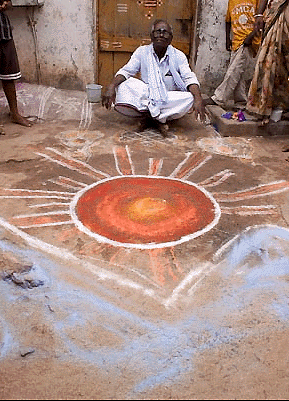
The solar rangoli above is clearly intended more as meditation than art by the South Indian brahmana who drew it outside his asrama door.
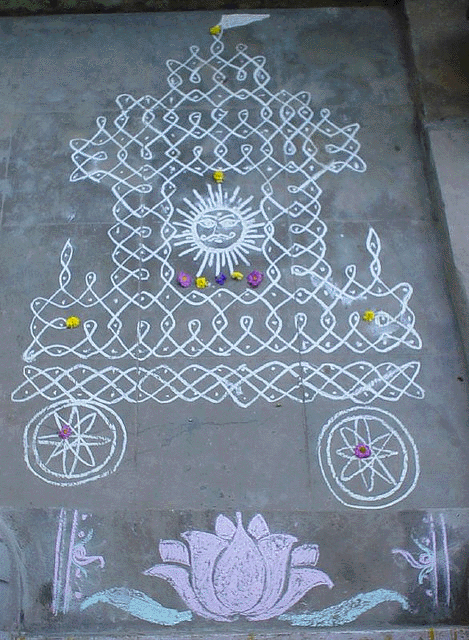
Above is a Surya Ratha kolam prepared in observance of Makar Sankranti festival. Here, the Sun god rides in his chariot across the skies.
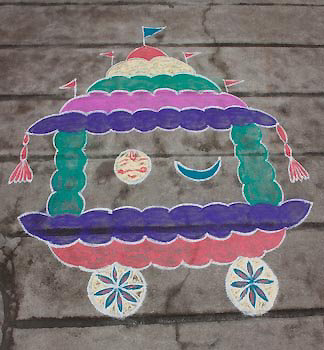
In the Sankranti Ratha cart above, Chandra and Surya ride together. This chariot kolam was drawn for a Visnu festival at Chennai.
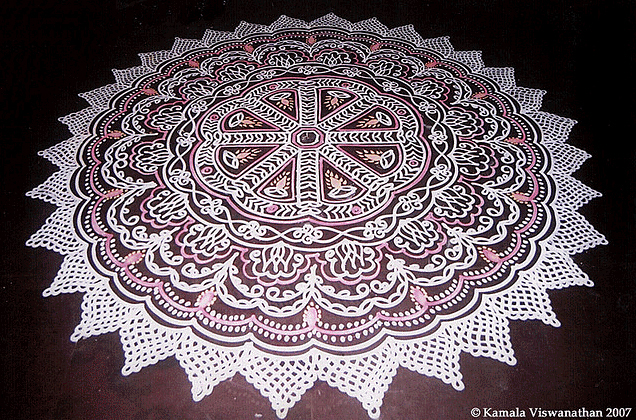
In this very elaborate solar kolam, the symbol at the center might be taken as chakra or ratha wheel, but it actually represents the diya (vallaku) , or Diwali lamp. This design is so tightly woven, one might mistake the picture for embroidered lace.
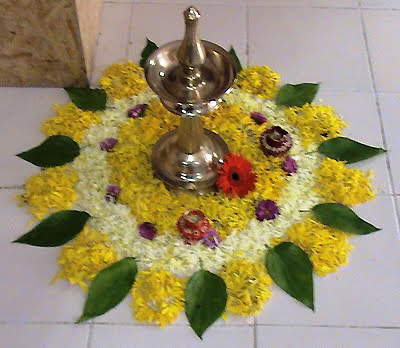
The little sun above is known as onam rangoli, from Kerala. Lord Surya, who is also known as Prathyaksha Narayana, is depicted in many different styles of rangoli across India on Ratha Sapthami. On the seventh day of the calendar, the Surya Ratha begins. On the last two days of the festival, the third and fourth days of Sankranthi (observed just a few days ago, on February 10th), Surya and his one-wheeled chariot can be seen painted onto streets, floors and walls everywhere.
| |